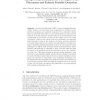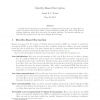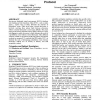2022 search results - page 247 / 405 » Trust in Multi-Agent Systems |
INFOSCALE
2009
ACM
14 years 4 months ago
2009
ACM
Abstract. Application layer DDoS attacks, to which network layer solutions is not applicable as attackers are indistinguishable based on packets or protocols, prevent legitimate us...
ECOOP
2005
Springer
14 years 3 months ago
2005
Springer
In Java 2 and Microsoft .NET Common Language Runtime (CLR), trusted code has often been programmed to perform accessrestricted operations not explicitly requested by its untrusted ...
IACR
2011
12 years 9 months ago
2011
Identity-based decryption is an alternative to identity-based encryption, in which Alice encrypts a symmetric key for Bob under a trusted authority’s public key. Alice sends Bob...
SAC
2009
ACM
14 years 4 months ago
2009
ACM
Usage controls enable the provider of some information to limit how recipients may use it. Usage controls may be desirable in enterprise environments, e.g., for regulatory complia...
NOSSDAV
2009
Springer
14 years 4 months ago
2009
Springer
Peer-to-peer distributed virtual environments (DVE's) distribute state tracking and state transitions. Many DVE's - such as online games - require ways to fairly determi...



